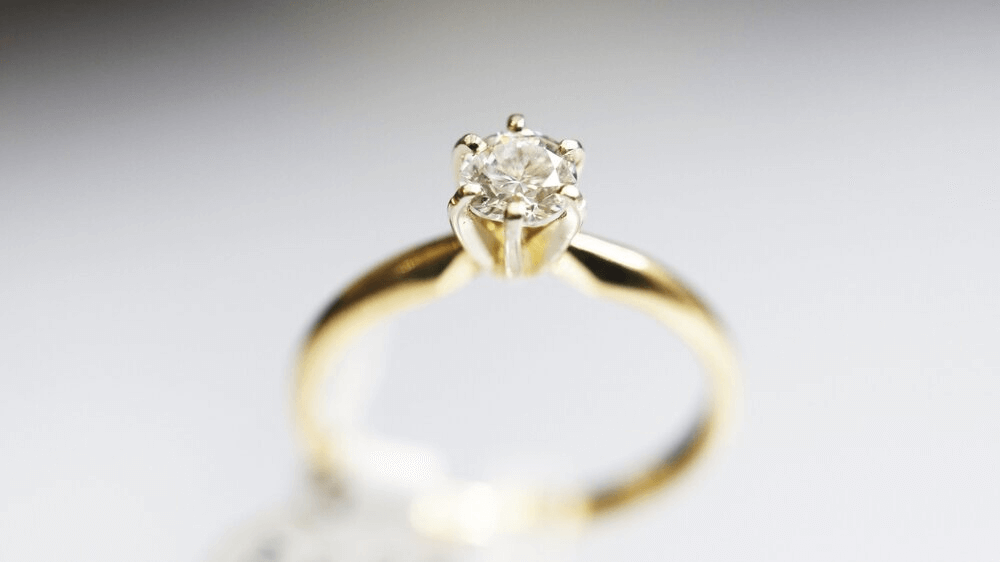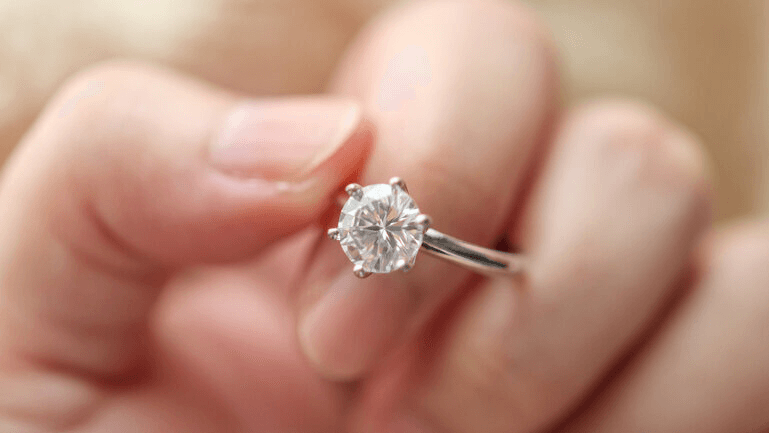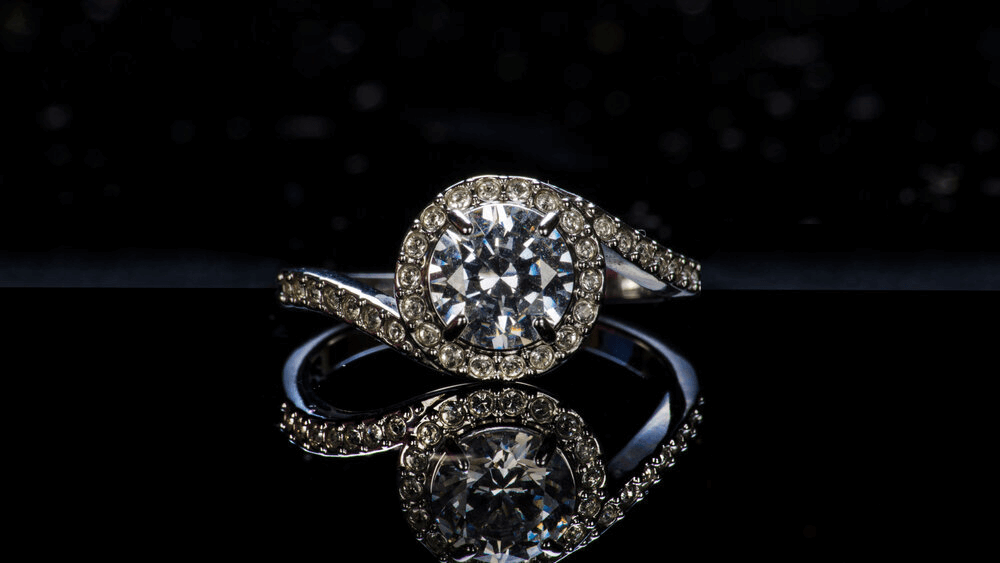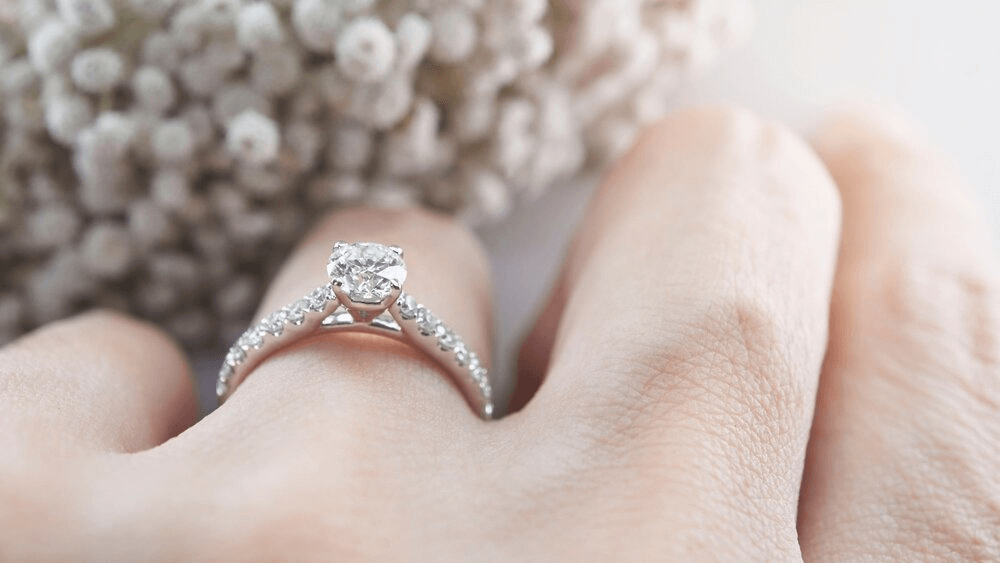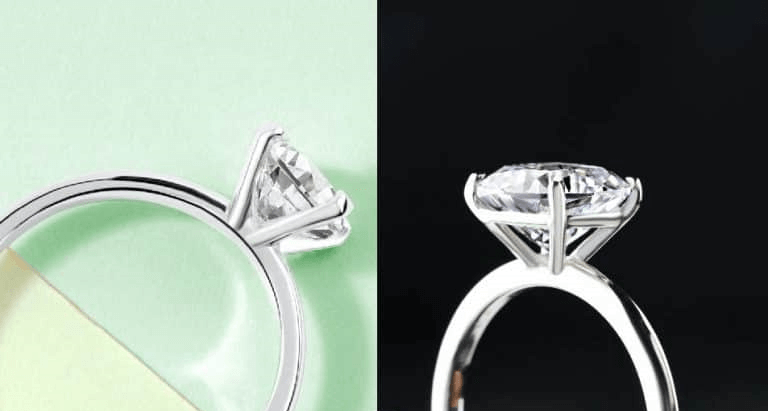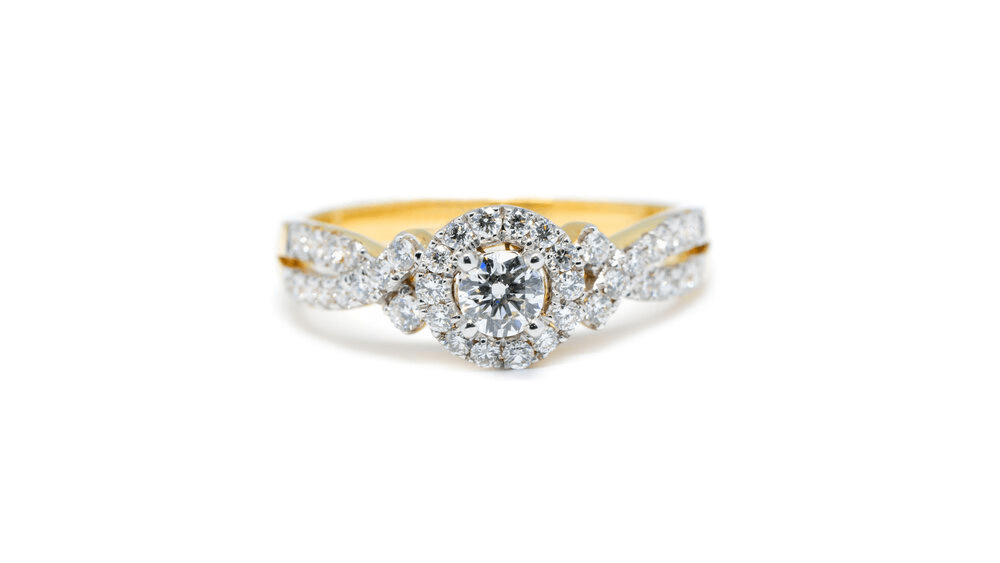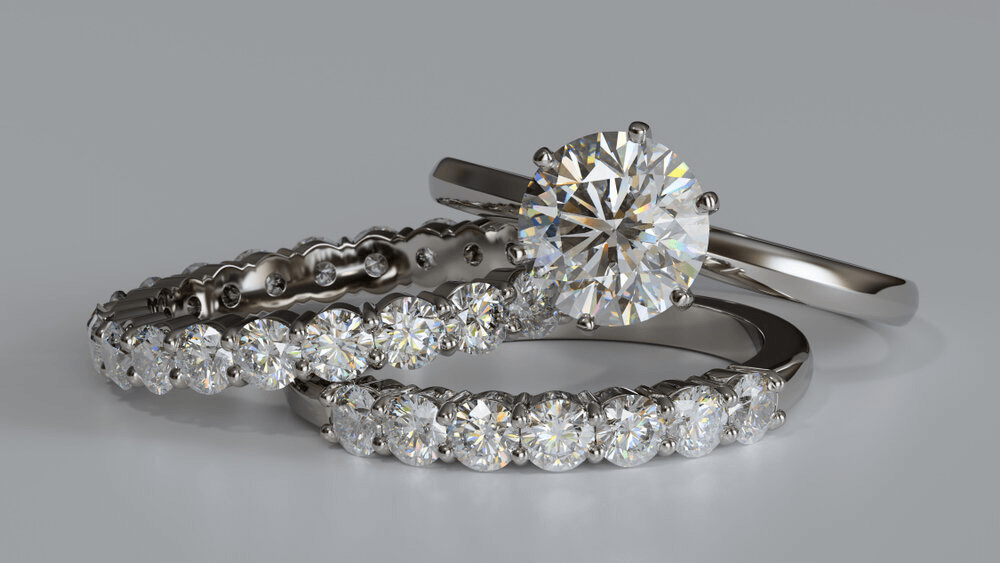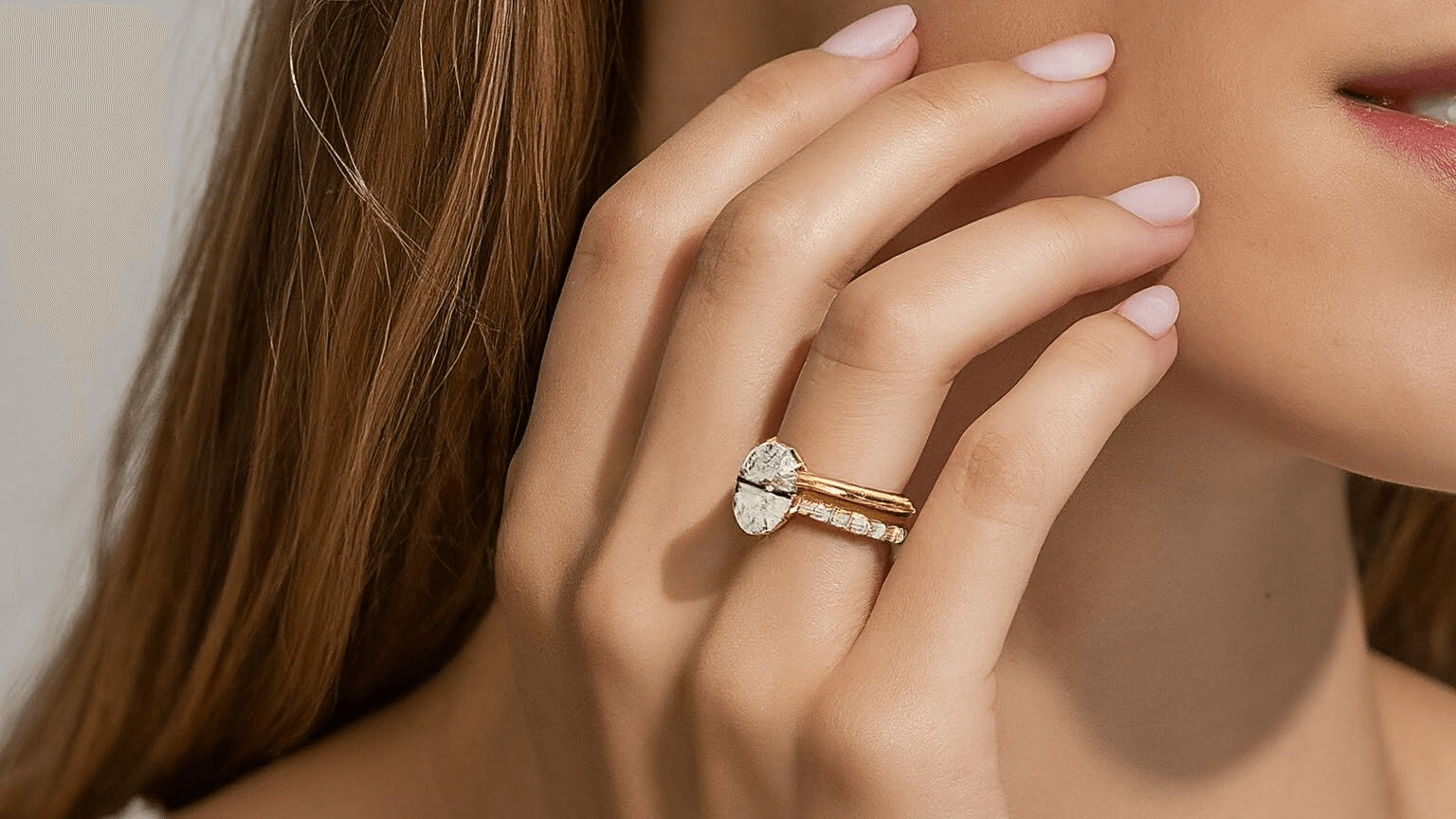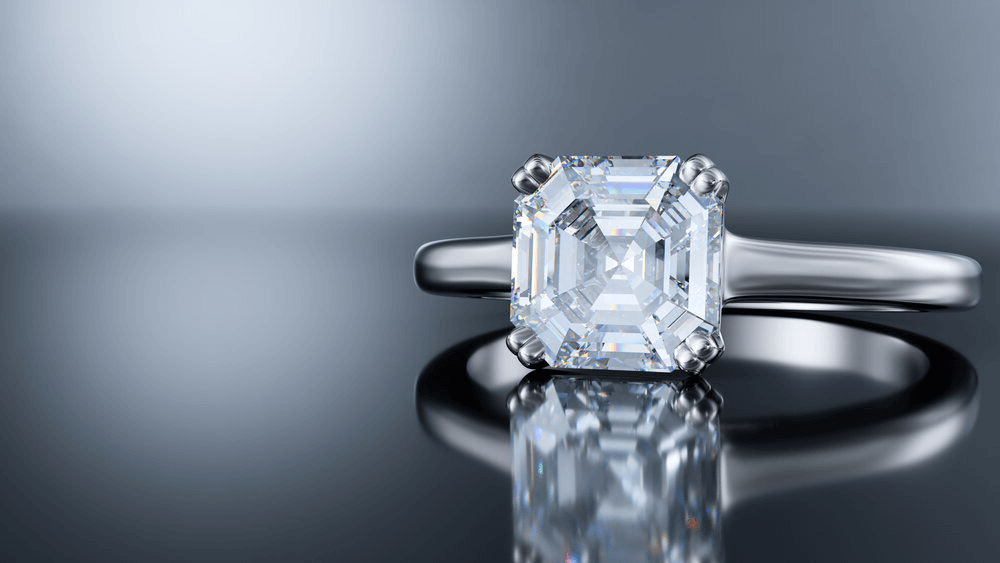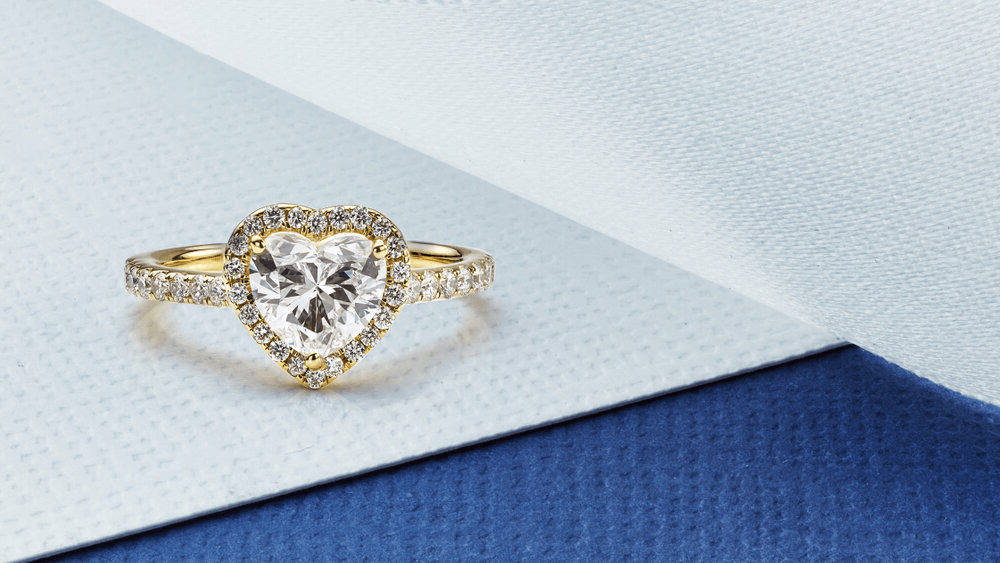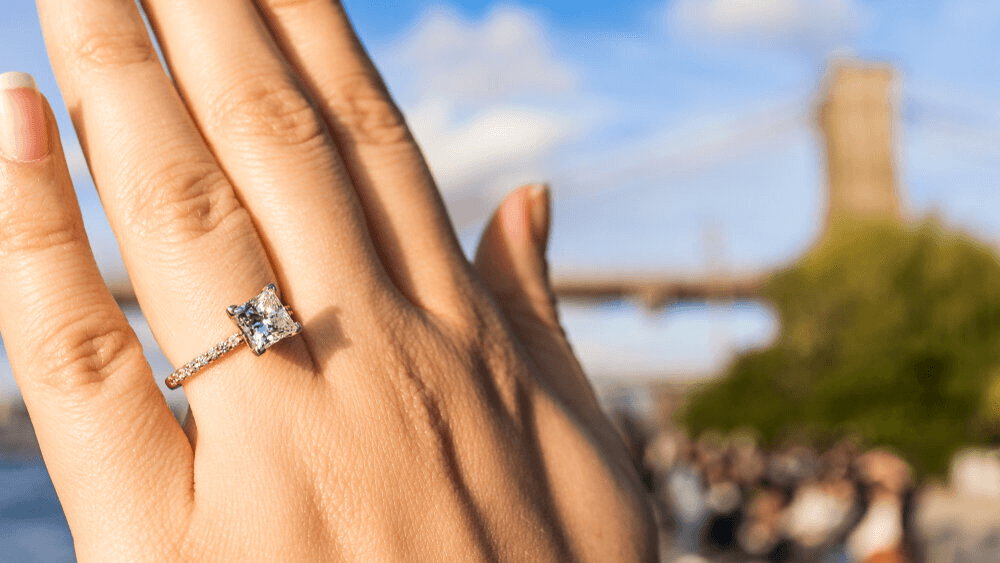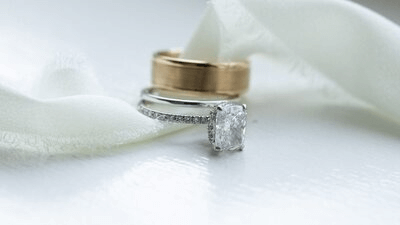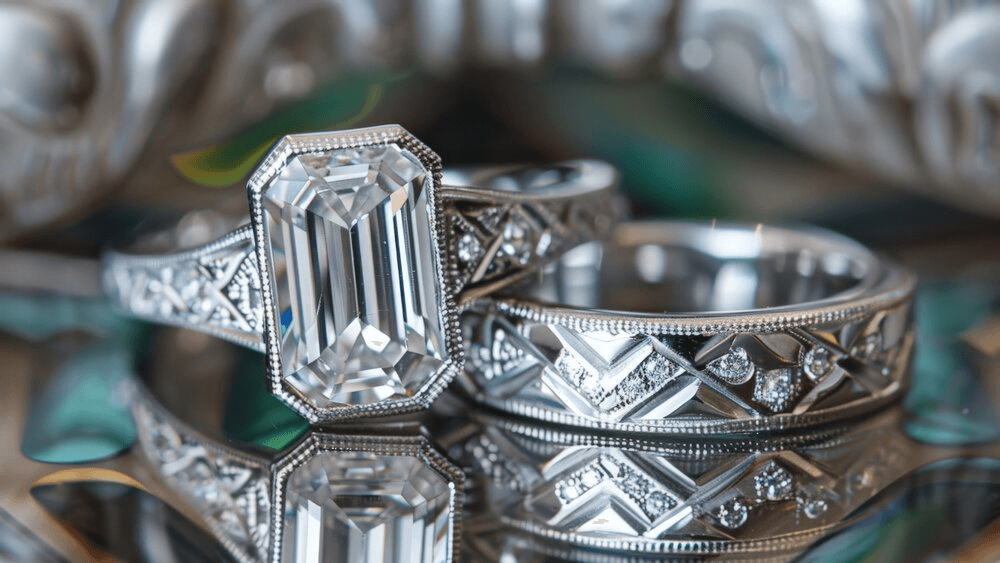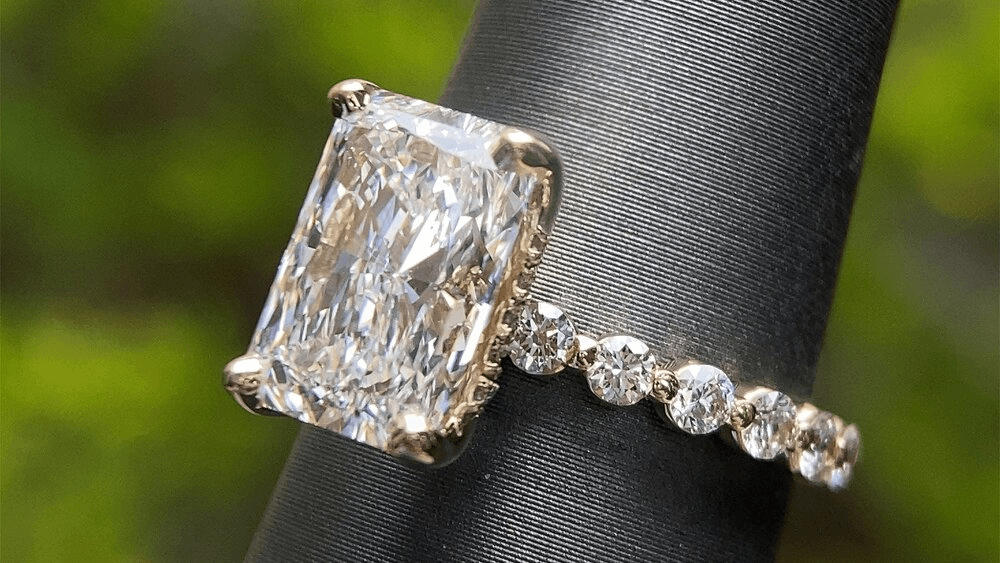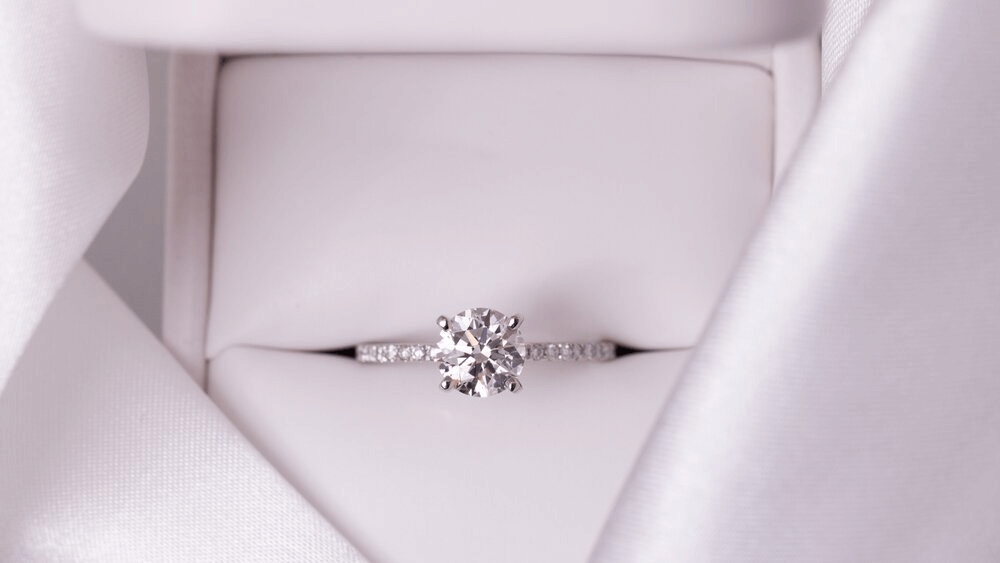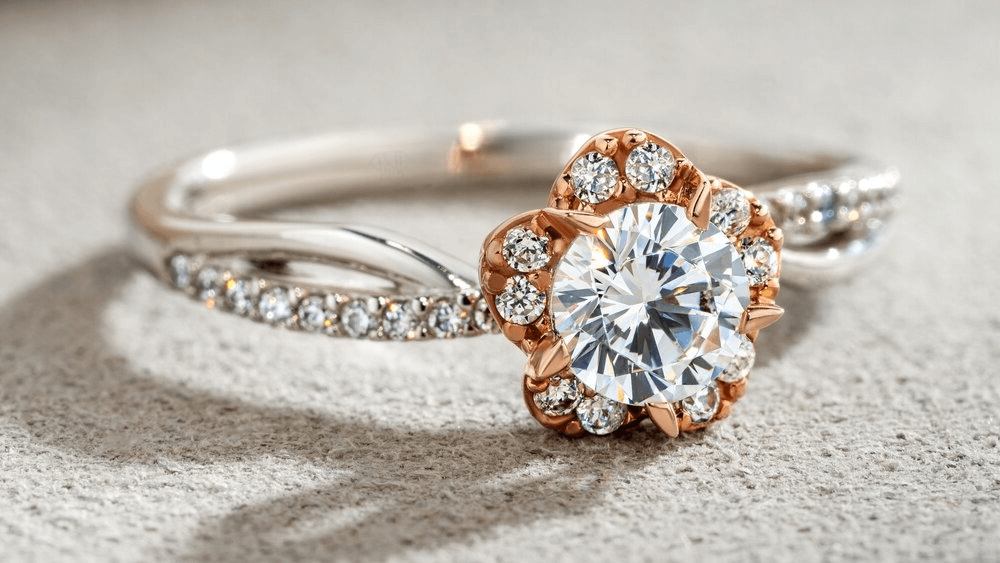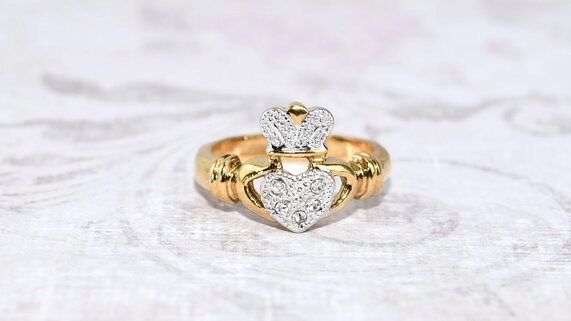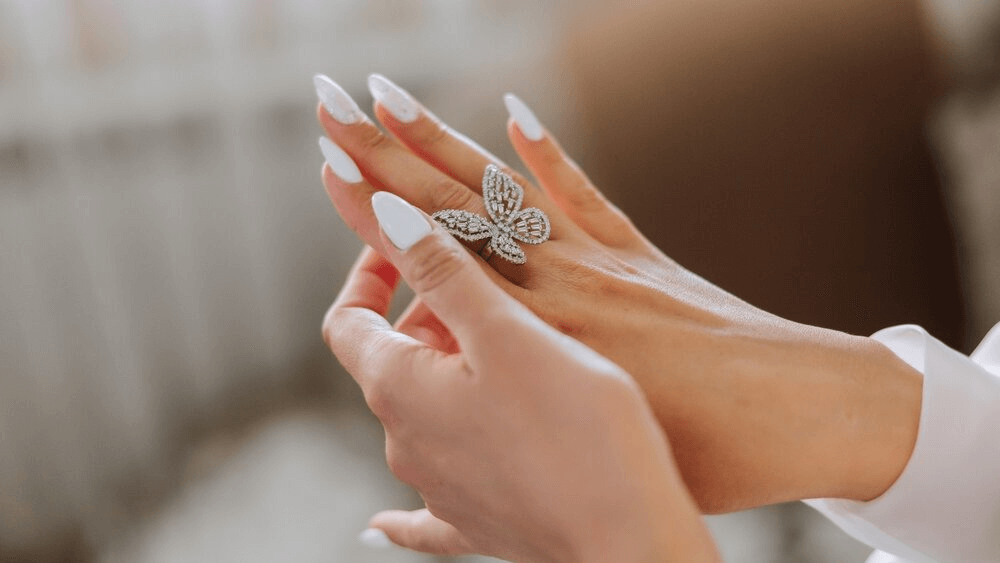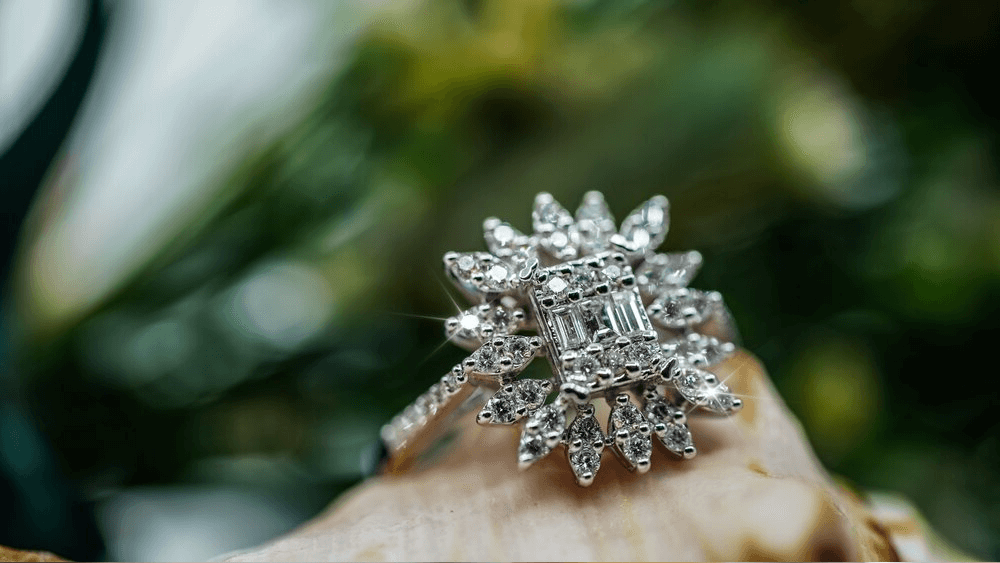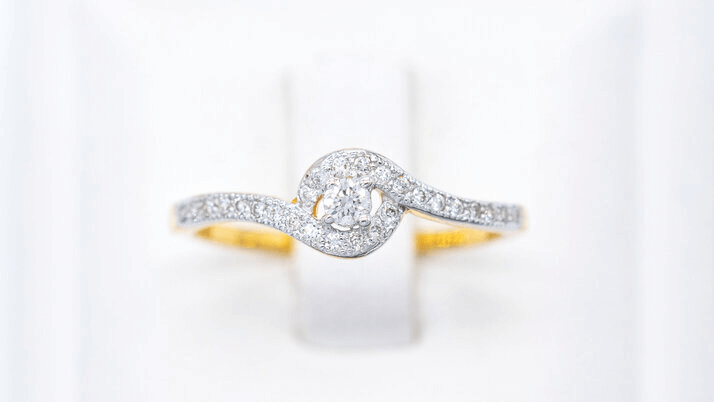Art Deco Sparkle: Your Dream Engagement Ring

By Gary A.

Edited by Olivia H.
Published Aug 8, 2024
Edited on Mar 31, 2025
Art Deco engagement rings are a perfect blend of vintage glamour and modern sophistication, making them an iconic choice for those who appreciate timeless elegance and bold design.

Navigate This Guide:
- 6 Quick Tips for Choosing an Art Deco Engagement Ring
- Introduction to Art Deco Engagement Rings
- The Distinctive Features of Art Deco Rings
- The Metalwork of Art Deco Diamond Engagement Rings
- Selecting the Perfect Art Deco Engagement Ring
- Caring for Your Art Deco Treasure
- The Symbolism of Art Deco Rings in Modern Love Stories
- Our Expert Take
- 7 Frequently Asked Questions about Art Deco Engagement Rings
Before we dive deeper into the specifics, here are some practical tips to help guide your decision-making process:
6 Quick Tips for Choosing an Art Deco Engagement Ring
- Tip 1: Understand the Art Deco Style:
- Familiarize yourself with the distinctive features of Art Deco jewelry. Look for bold geometric patterns, clean lines, streamlined forms, and motifs like sunbursts, fans, and zigzags. Recognizing these elements will help you identify genuine Art Deco pieces.
- Tip 2: Examine the Craftsmanship:
- Art Deco jewelry is known for its exquisite craftsmanship. Pay attention to the detailing, setting, and overall finish of the ring. Any rough edges, misaligned patterns, or poor craftsmanship might indicate a reproduction or a piece that’s not genuinely from the Art Deco era.
- Tip 3: Check the Gemstones:
- Art Deco rings often feature colorful gemstones alongside diamonds. Ensure that the gemstones are genuine and not synthetic replacements. Popular stones from the era include sapphires, emeralds, and rubies. Also, older diamond cuts like the Asscher, emerald, and cushion cuts were prevalent during the Art Deco period.
- Tip 4: Metal Type:
- Platinum was the metal of choice for many Art Deco pieces, but yellow and rose gold were also used. Ensure the metal aligns with the period and check for any hallmarks or stamps that might indicate the metal’s purity and authenticity.
- Tip 5: Ask About Provenance:
- If possible, inquire about the ring’s history or provenance. Authentic Art Deco pieces might come with a backstory or documentation that can provide additional assurance of its authenticity.
- Tip 6: Beware of Reproductions:
- Due to the popularity of the Art Deco style, many modern reproductions are available in the market. While these can be beautiful and more affordable, they might not hold the same value or historical significance as genuine pieces. Always ask if the piece is original from the 1920s-30s era or if it’s a newer reproduction.
Now that you’ve got these practical tips, use Jeweler AI below to find the perfect engagement ring that suits your style and budget:
Introduction to Art Deco Engagement Rings
Heart stolen by the glamor of the Gatsby era? You’re not alone. Art Deco engagement rings are some of the most popular, and for good reason…
If there was one single phrase that could summarize one of the most opulent, beguiling, and enchanting periods in history, it would be this one: Art Deco jewelry. While every style brings a new dimension to those raw components of diamond, gold, platinum, and precious stones, art deco managed to rejuvenate them more than any other. Glitzy and glamorous, but also highly refined and sophisticated, this is the perfect style for anyone who loves that old world feel without the florals of art nouveau, or the gothic romance vibes of the Victorians and Edwardians.
Art Deco rings are characterized by their clean lines, geometric shapes, and a sense of order and symmetry that reflects the industrial optimism of the early 20th century. These rings exude a kind of glamor that feels both vintage and contemporary, making them an enduring choice for those who value both tradition and innovation. Modern jewelers continue to draw inspiration from Art Deco, ensuring that this style remains relevant and beloved.
In this guide you’ll find all you need to know.
The Distinctive Features of Art Deco Rings
Art Deco rings are celebrated for their unique and striking design elements. These features not only highlight the artistic prowess of the era but also make these rings highly sought after by collectors and couples alike.
Geometric Symmetry and Luxurious Details
One of the most defining characteristics of Art Deco rings is their geometric symmetry. Think crisp lines, sharp angles, and a meticulous balance that brings a sense of harmony and structure to each piece. Shapes like rectangles, squares, and triangles are often used to create intricate patterns that are both bold and elegant. This geometric precision is a hallmark of the Art Deco style.
Platinum, known for its durability and ability to hold complex designs – along with its luxury – became the metal of choice during this period. The use of platinum allowed jewelers to craft intricate settings that could support elaborate details and large gemstones without compromising on strength. Gold also features prominently, adding warmth and richness to the designs.
Intricate details such as filigree work, milgrain edges, and pavé settings are common in Art Deco rings. These elements add depth and texture, turning each ring into a miniature work of art, although they don’t create the organic, intricate shapes we associate with the art nouveau movement.
The Romance of Vintage Gemstones
Gemstones are a central element in the allure of Art Deco rings. While diamonds were highly valued, the period also saw an appreciation for a variety of colored gemstones like sapphires, emeralds, rubies, and onyx, either alone or in combination with diamonds in order to create striking contrasts and vibrant visual effects.
The cuts of these gemstones were also distinctive, typically favoring geometric shapes rather than curves and soft lines. Emerald cuts, baguettes, and marquises were particularly popular, aligning perfectly with the geometric emphasis of Art Deco design.
However, it’s important to approach vintage gemstones with a discerning eye. Many stones from the Art Deco period were cut using older techniques that might not match the precision and sparkle of modern cuts. While this can add a certain charm and authenticity, it can also mean that the stones are less brilliant – or, in other words, lacking sparkle.
Another consideration is the ethical background of vintage gemstones. Diamonds and other precious stones mined in the early 20th century often lack the ethical sourcing guarantees that come with modern gems. The industry standards for mining and labor were far less regulated back then.
The romance of vintage gemstones lies in their history and unique beauty. Many Art Deco rings feature stones that have been carefully selected and passed down through generations, which is a special story to consider yourself a part of, but remember that these rings come from times gone by. If you’re starting from scratch, then it’s not the best idea to invest in a vintage ring; new rings inspired by old styles are much better, for many reasons.
The Metalwork of Art Deco Diamond Engagement Rings
The metalwork in Art Deco engagement rings is nothing short of extraordinary. It’s there to reflect the designers’ appreciation for form and precision – the beautiful, understated power of geometry.
Platinum to Gold: The Transition in Art Deco
One of the most notable transitions in Art Deco jewelry was the shift from platinum to gold. Early in the Art Deco period, platinum was the preferred metal due to its strength and ability to hold complex designs. It was also a relatively new metal for jewelers to work with, and this gave it an extra touch of prestige among shoppers.
However, the 1930s changed the US economy drastically, and once again gold began to gain popularity.
These days, both platinum and gold Art Deco rings are popular options, depending on preference and budget.
Selecting the Perfect Art Deco Engagement Ring
It’s not about squeezing every art deco element into one ring design. It’s about being true to the style while also considering your partner’s tastes – whether they like minimalism or a more maximalist. Style – and lifestyle.
Understanding Authenticity and Craftsmanship
As we mentioned above, investing in a vintage ring is rarely the best idea. That said, if you’re committed to a historical piece, then authentic Art Deco rings crafted between the 1920s and 1930s often feature hallmarks and maker’s marks that can help verify their provenance. These marks, combined with the quality of the craftsmanship, ensure that you are investing in a genuine piece of history.
Be very cautious of pieces that show excessive wear or poor restoration work, as these can diminish both the aesthetic and monetary value of the ring.
Caring for Your Art Deco Treasure
Old or new, these rings, with their intricate designs, need regular maintenance to ensure they remain as stunning as the day you went down on one knee.
Maintenance Tips for Vintage Rings
These rings, with their intricate designs and vintage elements, need specialized maintenance to ensure they remain as stunning as the day they were created.
Insurance and Appraisal: Safeguarding Your Investment
Regular cleaning is essential to keep the ring looking its best, but it should be done gently. Use warm, soapy water and a soft brush to clean the ring, avoiding harsh chemicals that could damage the metal or gemstones. Read our full guide here.
The Symbolism of Art Deco Rings in Modern Love Stories
The art deco period was relatively short-lived, but it’s an incredibly popular style intrinsically tied to the roaring 1920s, when luxury and excess were everywhere, and people were looking for new ways to express themselves that were free from the traditions and mores of the Victorian age.
The era sat on the very precipice of modernity, and all those love stories that culminated in art deco engagement rings are immortalised in our imaginations.
Embracing art deco is about more than liking an aesthetic. It’s about savouring a brief, beautiful moment in history and making that a part of your love story.
Our Expert Take
Art deco is a truly striking style to emulate in your engagement ring. Luxurious, opulent, but less intricate and organic than art nouveau, this is a great one to keep in mind as you start to figure out which design elements to include, and which to leave out. This style is all about striking the right balance and maximizing the beauty of some of the simplest shapes and silhouettes we have at our disposal.
7 Frequently Asked Questions about Art Deco Engagement Rings
- Q: What defines an Art Deco engagement ring?
- A: An Art Deco engagement ring is characterized by its geometric shapes, bold lines, and use of colorful gemstones alongside diamonds. These rings often feature intricate designs, including motifs like sunbursts, fans, and zigzags, reflecting the unique style of the Art Deco era (1920s-1930s).
- Q: How can I tell if an Art Deco engagement ring is genuine?
- A: To determine the authenticity of an Art Deco engagement ring, look for hallmark features of the era such as geometric patterns, the use of platinum or gold, and older diamond cuts like Asscher, emerald, and cushion. Examining the craftsmanship, metal type, and any available provenance can also provide insights into its authenticity.
- Q: Are colorful gemstones common in Art Deco engagement rings?
- A: Yes, colorful gemstones such as sapphires, emeralds, and rubies are commonly featured in Art Deco engagement rings. These gemstones are often used alongside diamonds to create vibrant, eye-catching designs.
- Q: Is platinum the only metal used in Art Deco engagement rings?
- A: While platinum was a popular choice for Art Deco jewelry due to its durability and luster, yellow and rose gold were also used. The choice of metal can vary, and authentic Art Deco rings may be found in different metal types.
- Q: How can I differentiate between a genuine Art Deco ring and a modern reproduction?
- A: Genuine Art Deco rings may show signs of age, have specific craftsmanship styles of the era, and sometimes come with documentation or a known history. Modern reproductions might look similar but often lack the historical wear and may use contemporary manufacturing techniques.
- Q: Can Art Deco engagement rings be considered good investments?
- A: Art Deco engagement rings can be valuable, especially genuine pieces in good condition with high-quality craftsmanship and materials. Their historical significance and unique designs can make them sought-after items for collectors and enthusiasts.
- Q: How should I care for an Art Deco engagement ring?
- A: Care for an Art Deco engagement ring by cleaning it gently with a soft, damp cloth and avoiding harsh chemicals. Store it separately to prevent scratches and consult a professional for regular maintenance and any necessary repairs to preserve its condition.
Discover your perfect Art Deco ring with Jeweler AI. Unveil vintage elegance tailored for your unique love story.
FOLLOW-UP GUIDE SERIES





